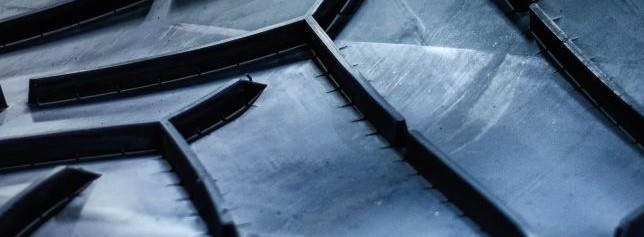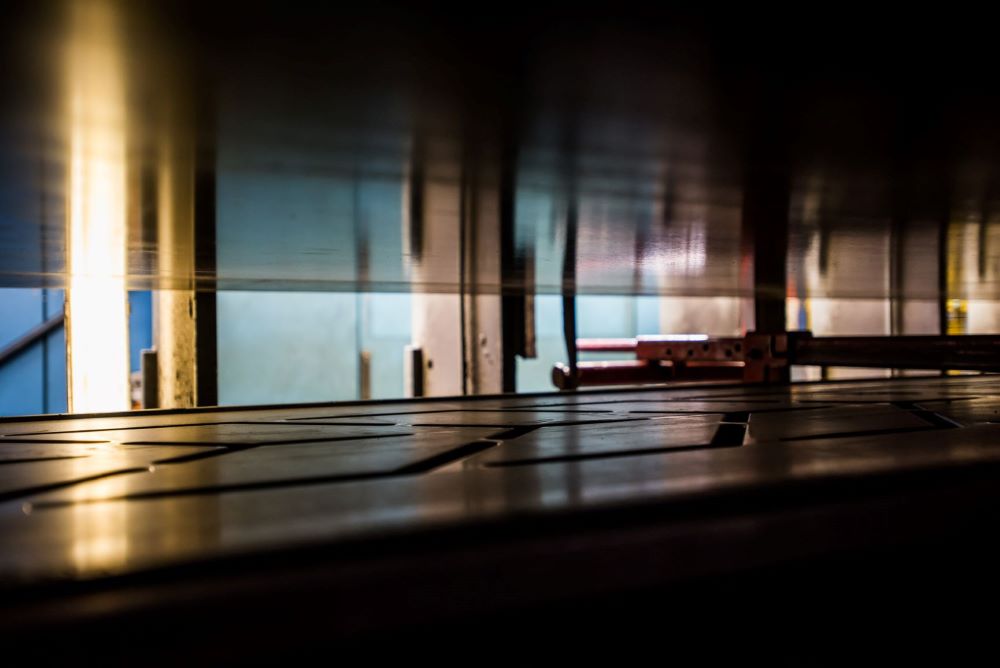Chevron conveyor belts – avoiding the rip off

When it comes to chevron-profiled belting, appearances can be very deceptive. One belt may look virtually identical to another belt and the basic specifications such as tensile strength may also appear to be identical. Therefore, it is reasonable to assume that the durability and working lifetime will be roughly the same. However, alarm bells should start to ring if there is a significant difference in the asking price. The reason why one belt can have a dramatically lower price compared to one of a seemingly identical specification is very easy to explain – the quality and consistency of the rubber and the type of production process used to create the raised profiles.
There is a direct correlation between the price and the quality of the rubber and there is no doubt that the quality of the rubber that has the biggest influence on performance, repair and maintenance costs and the cost-effectiveness of the end-product in terms of operational longevity. The rubber used for conveyor belts usually constitutes at least 70% of the material mass and is therefore the single biggest opportunity for cost-cutting by manufacturers who want to compete for orders based on price rather than reliability and operational longevity.
The two most common methods used to minimise the cost of the rubber are the use of recycled rubber of highly questionable origin and the use of cheap ‘bulking’ fillers such as chalk to replace part of the rubber polymers in the rubber compound. Another practice is the burning of used rubber car tyres to create a cheap form of carbon black, which is a crucial ingredient of rubber. Some 20% of rubber compound is made up of carbon black so it has a notable impact on the overall cost of making a conveyor belt.
Good quality carbon black is more costly because it is created by a process of burning oil in a strictly controlled, low-oxygen environment so that combustion is incomplete. Burning used car tyres means that any oils and greases remain present within the ‘regenerated’ materials, which has a detrimental effect on the physical properties of the rubber. The net result is rubber that has very poor resistance to dynamic stress, wear and tear, including cutting and gouging of the surface, and the degradation caused by ground-level ozone and UV exposure. As you would expect, the combination of these factors seriously reduces the operational lifetime of the belt.
Make it once, make it strong
The second essential requirement needed to manufacture a durable, low-operating cost profiled belt is that it needs to be a single, homogenous structure using a one-step vulcanisation production process rather than a two-step process. This is especially important for belts with profiles of 15mm in height and above. A completely homogenous structure can handle the dynamic stress forces created by the continual flexing around pulleys and drums and is significantly stronger and more resilient against spreading damage or having profiles shear off entirely, which is a common problem.
To create a single homogenous structure the base belt (at this stage comprising of only uncured rubber) is placed in the vulcanising press between the base plate of the press and a chevron mould plate positioned immediately below it. The compression of the upper and lower plates then forces the additional rubber to flow into and fill the mould cavities. Vulcanisation of both the base belt structure and the rubber-filled moulds then takes place simultaneously to form a single homogenous unit.
The mould plate used to make a ‘Single homogenous structure‘ chevron belt
Because of the technical complexity and the higher costs involved, perhaps it is not surprising that apart from Dunlop Conveyor Belting, hardly any other manufacturer of note produces profiled chevron belt in this way.
An essential requirement of the one-step production process is having a single rubber compound that has been specially engineered for both the base belt structure and the chevrons and which can be vulcanised virtually simultaneously within the mould and the base belt structure. While being sufficiently malleable to allow it to flow smoothly and evenly into the moulds, the rubber also needs to have all the physical properties mentioned earlier including being fully resistant to the effects of ozone and ultraviolet light. It also needs to conform to European REACH regulations so that the end product is also safe for conveyor operators to handle.
Although this may sound relatively straightforward, it is actually extremely difficult (and more costly) to produce such a versatile rubber compound. This is due to the huge number of chemicals, polymers and additives that need to be used, which have to be very precisely balanced and mixed so that the final compound ‘cocktail’ possesses all of the necessary physical properties. Fortunately, the difficulties are hugely outweighed by considerable advantages.

A ‘single structure’ chevron belt needs a highly specialised rubber
Although easier and cheaper to achieve, the biggest disadvantage of the two-step production process is that two non-identical rubber compounds are vulcanised (bonded) together. One compound formula is used to create the base belt and a different, more malleable compound is used in the mould plates. Not only is the bond between two different compounds naturally weaker and prone to the effects of dynamic stress caused by flexing, the compound used for the mould plates invariably has a much lower resistance to cuts and general wear and tear. It is not unusual, especially among so-called ‘economy’ belts imported from Asia, that chevrons as high as 25mm or 32mm can wear almost completely flat within a matter of a few months and in some cases, weeks.
Cheap for a reason
Making profiled belts that require minimal repair and maintenance and which give the best return on investment by providing the longest possible working life is something very few belt manufacturers can achieve. Fortunately, there are one or two still out there that continue to prove that chevron belts can be genuinely durable and provide a much lower lifetime cost.
Leslie David

